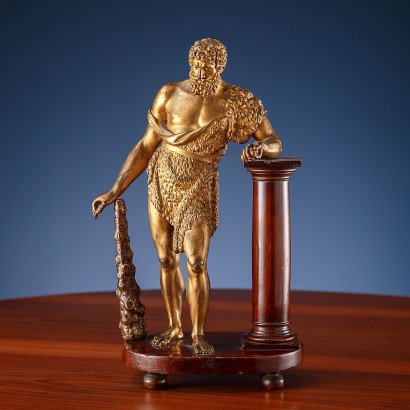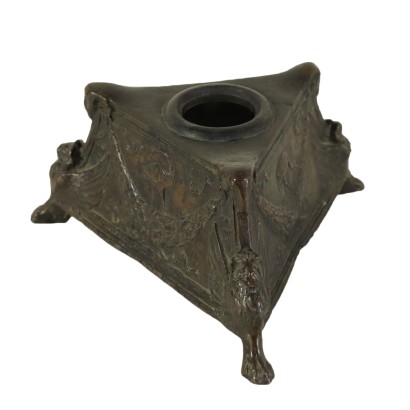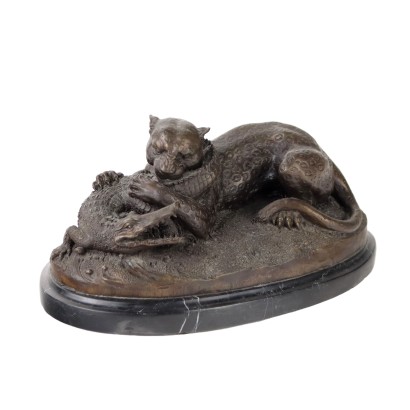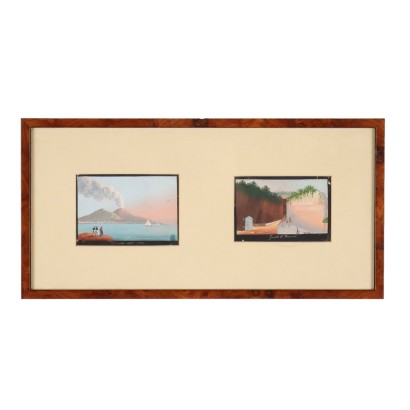Hercules Sculpture Bronze France XIX Century - France First Quarter XIX Century
Features
France First Quarter XIX Century
Style: Empire (1804-1815)
Age: 19th Century / 1801 - 1900
Origin: France
Main essence: Walnut
Material: Burnished Bronze , Gilded Bronze
Description
Standing Hercules sculpture, wearing the skin of the Nemean lion; in gilded bronze, the removable club that he holds in his right hand is in burnished bronze, while in the opposite hand he holds the three golden apples of the garden of the Hesperides; the same arm rests on a walnut column as well as the base. It is a bronze also used as part of a clock from the early nineteenth century, known in several versions with small variations and is clearly inspired by the Farnese Hercules, in particular in the pensive attitude and in the posture of the legs: the sculpture was in fact known in France thanks to the numerous casts made on royal commission or for the Academies.
Product Condition:
Product that due to age and wear requires restoration and resumption of polishing.
Dimensions (cm):
Height: 40
Width: 24,5
Depth: 15
Certificate issued by: Enrico Sala
Additional Information
Style: Empire (1804-1815)
Decorative style of the furniture that is affirmed under the Empire of Napoleon Bonaparte, that is, between 1799, the year of his election as consul, and 1815, the year of his definitive defeat.It has many elements of continuity with the previous Direttorio style, in the more general Neoclassical climate, which derived from the study of classical antiquity the forms and models to be inspired in the creation of furniture.
The peculiar feature of this style is a greater grandeur and courtesy of the furnishings, which had to convey the grandeur of the French nation to the world, hence the name Empire style.
The furniture is characterized by straight, majestic and massive lines, adorned with motifs dear to Napoleon such as bees, eagles, large Ns surrounded by laurel, and, after the Egyptian campaign, many elements taken from Egyptian art.
He prefers the flat bronze decorations, often gilded, to the refined carvings of previous years.
The typical essence of Empire furniture is mahogany.
Find out more with our insights:
Classic Monday: How society influences the taste in furnishings
Classic Monday: Empire, one style of furniture with political purposes
Classic Monday: in the Empire bed roots of culture
Classic Monday: the timeless charm of a toilet Empire



























